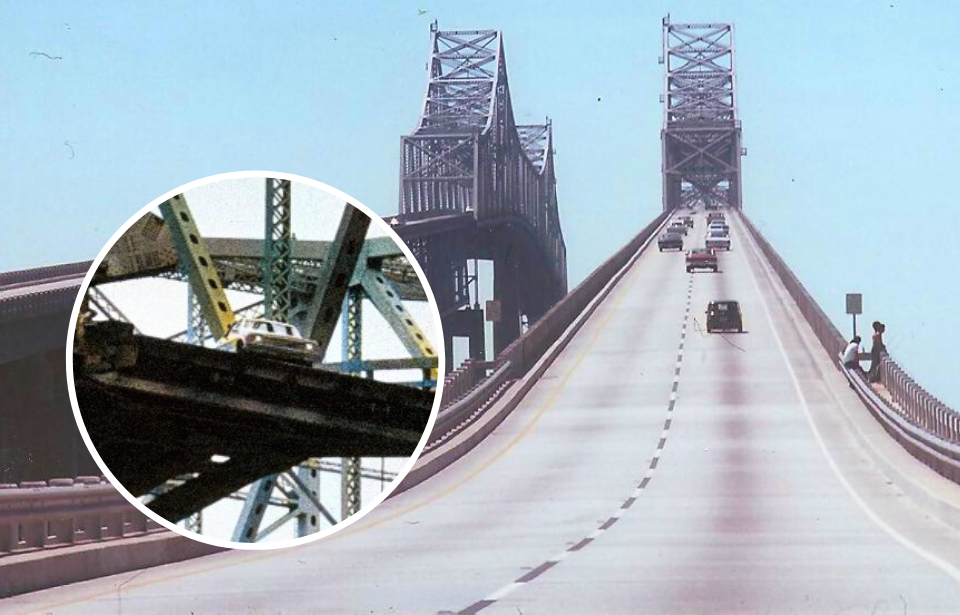An unpredictable storm on a spring morning in Tampa Bay, Florida caused one of the most disastrous events in Tampa Bay’s history. On May 9, 1980, a freight ship collided with the pillars of the Sunshine Skyway bridge, causing it to collapse and taking the lives of several people along with it. Several things had gone wrong for the ship’s pilot, causing a chain of preventable events that could have possibly stopped the disaster from happening.
The original Sunshine Skyway bridge
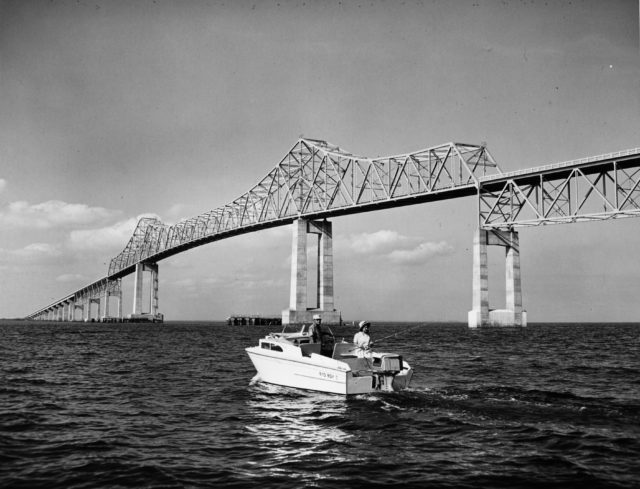
The Sunshine Skyway bridge first opened in 1954. It was a two-lane beam bridge supported by 32 concrete pillars with a shipping channel opening of 864 feet. The entire bridge ran 14 miles over Tampa Bay and connected St. Petersburg to Terra Ceia, Florida.
As more cars added to the traffic in the coming years, it quickly became clear that a two-lane bridge would no longer be sufficient for rush hour traffic. To remedy the situation, engineers decided to separate northbound and southbound traffic onto two bridges to allow for travel going in both directions. In 1971, a second bridge was completed and opened to carry southbound traffic while the previous bridge continued to carry northbound vehicles.
Blinding weather conditions set a freighter up for disaster
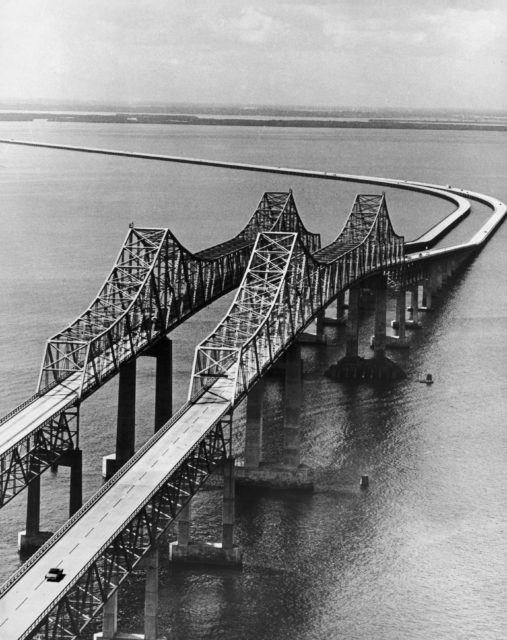
On May 9, 1980, 37-year-old Captain John Lerro was tasked with piloting the MV Summit Venture freighter on its 40-mile journey from the Gulf of Mexico to the Port of Tampa. The freighter had a breadth of 85.5 feet and weighed 19,734 tons, making it more than capable of passing through the shipping channel underneath the Sunshine Skyway.
During the freighter’s voyage, Lerro had to navigate through fog, but the real problems began as he neared the bridge early that morning. All of a sudden, a blinding squall of torrential rain, accompanied by winds reaching up to 70 miles per hour, caused the freighter’s radar to be knocked out.
Lerro was a good harbor pilot. He was slotted for a promotion that would have doubled his salary just two days after this fateful day. However, the sudden downpour and lack of visibility it caused was no match for Lerro, the freighter, or the original, southbound Sunshine Skyway bridge.
Lerro could’ve turned the ship or anchored
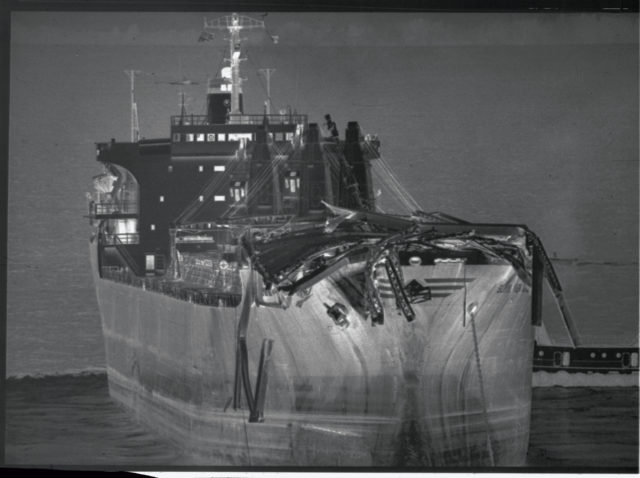
As the radar had been knocked out, Lerro had to weigh two potential options. Another ship, Pure Oil, had left the bay and was possibly approaching his location. He could have anchored the ship but would’ve run the risk of being struck by the oncoming vessel, as he could not locate the ship with his radar out of commission. Alternatively, he could continue forward through the designated channel under the bridge.
The problem with anchoring was that the strong winds could cause the freighter to lose control and could possibly toss it into the bridge. In the hopes of avoiding this, Lerro decided that carrying on safely under the bridge would be the best course of action. Unfortunately, he underestimated the strength of the winds while trying to navigate without radar, and they’d blown the freighter significantly off course.
The impact caused the bridge to collapse
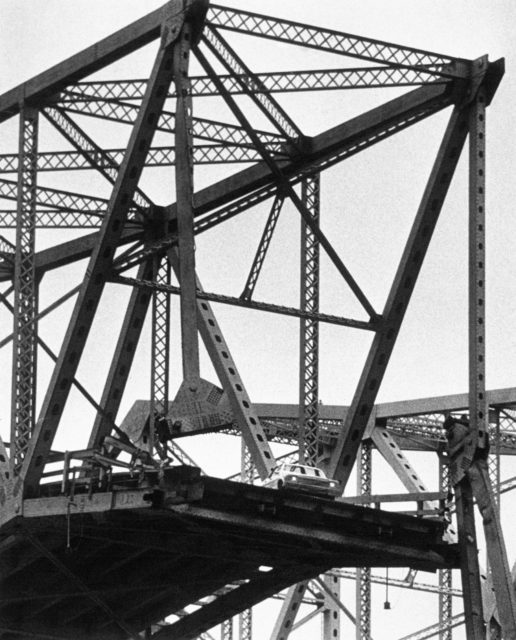
For a brief moment, the skies cleared and Lerro could see the reality of his situation. The freighter had been blown off course and was about to make impact with the bridge. Despite employing as many last-second maneuvers as he could think of, Lerro was unable to stop the inevitable.
At 7:33 A.M., the bow of Summit Venture struck pier 2S, causing a 1,200-foot span of the bridge to collapse and fall 150 feet into the water below. Immediately, Lerro radioed the Coast Guard for help, saying, “Get emergency . . . all the emergency equipment out to the Skyway bridge. Vessel has just hit the Skyway bridge. The Skyway bridge is down! Get all emergency equipment out to the Skyway bridge. The Skyway bridge is down. This is Mayday. Emergency situation. (Nearly screaming) Stop the traffic on that Skyway bridge!”
The freighter made impact with the bridge during rush hour, and the collapse led six cars, a truck, and a Greyhound bus to fall 15 stories into the water. The disaster caused 35 casualties, 26 of which were aboard the Greyhound bus. The youngest victim was seven months old, and the oldest was 92. Only one person survived the fall, Wesley MacIntire. His Ford Courier pickup truck fell onto the freighter before it fell into the water, and this allowed him to escape and swim to the surface.
The bridge was replaced
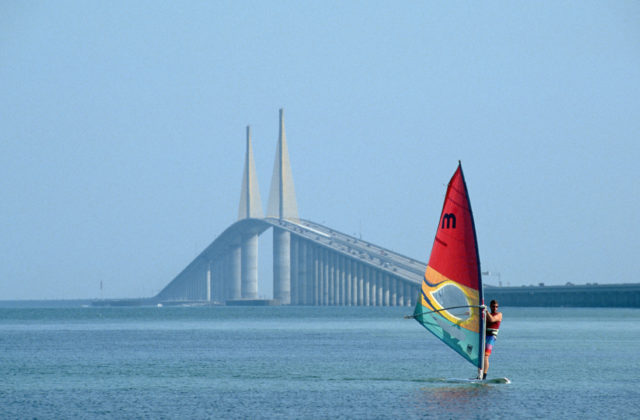
Following the disaster, the rest of the bridge was demolished. All that remained were the ends of the bridge, which now serve as fishing piers. The second bridge that had supported southbound traffic was converted to a two-lane bridge to allow a flow of traffic across Tampa Bay. It remained like this for six years until the opening of the new bridge in 1987.
The replacement bridge was called the Bob Graham Sunshine Highway, after the former governor and US senator, and it opened on April 30, 1987. The engineers of this replacement bridge built it with preventative measures in place to prevent any future disasters. Not only did they build it in a “better” location, but they raised its height to allow ships to pass underneath more easily. They also added dozens of “dolphin” bumpers to protect the bridge from ship impact.
Oddly, a shrimping boat called the Deliverance hit those protective bumpers on April 29, the day before the bridge was scheduled to open. The boat took on a lot of water and sank after being towed away. Damage to the bridge was minimal, however, so the opening ceremony proceeded as planned.
What happened to Lerro? Summit Venture?
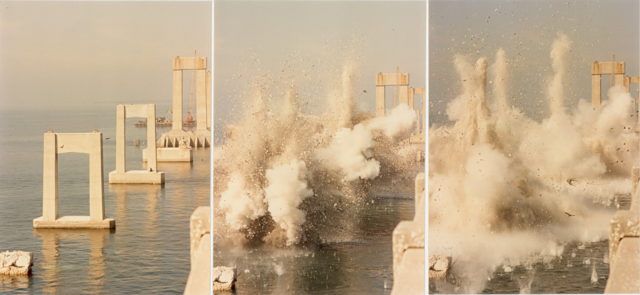
There were a lot of factors at play that morning that ultimately exonerated Lerro from negligence. First, the storm was not in the forecast and it completely blinded his visibility. Second, due to the lack of radar caused by the storm, Lerro had no idea that the other ship, Pure Oil, had anchored long before and was no longer a threat to his position. Third, no passing pilot had warned him of the oncoming storm.
The National Transportation Safety Board came to a vote of three to two, finding Lerro only partially responsible for the disaster. His license was temporarily suspended during hearings, but he was eventually granted his license back in 1981. That same year, Lerro developed multiple sclerosis and was physically unable to pilot ships, forcing him to surrender his license before the year’s end.
The Summit Venture went on to exchange hands several times before it ultimately sank in 2010 as the Jian Mao 9. It now rests underwater off the coast of Vietnam.
More from us: Annie Lytle Elementary School – Florida’s Most Haunted Building?
A memorial for those who lost their lives in the disaster stands on the Pinellas County side of the bay.
